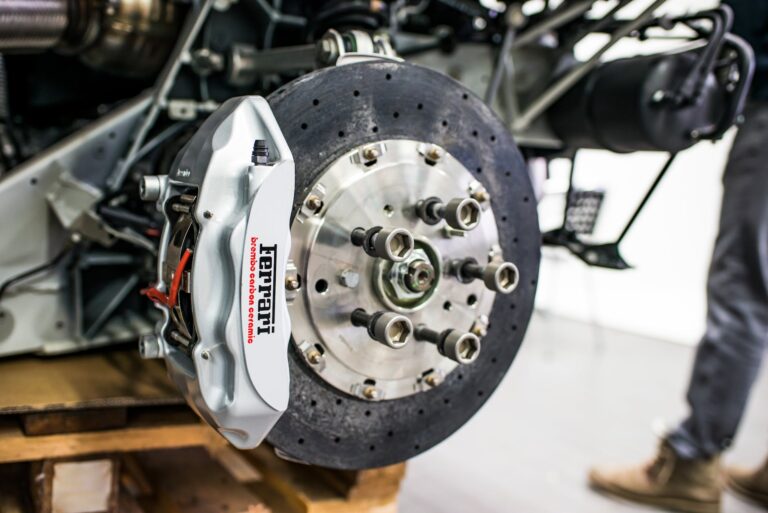Understanding Oil Change Services
When it comes to maintaining the health and performance of your Kia vehicle, regular oil changes are of utmost importance. Neglecting this vital aspect of car maintenance can lead to engine damage, decreased fuel efficiency, and overall poor performance. Therefore, understanding the importance of regular oil changes and the benefits of proper oil maintenance is crucial.
Importance of Regular Oil Changes
Regularly changing the oil in your Kia is essential for the longevity and performance of the engine. Over time, engine oil gets contaminated with dirt, debris, and byproducts of combustion, causing it to lose its effectiveness. When old, dirty oil circulates through the engine, it cannot lubricate the moving parts properly, leading to increased friction, wear, and potential damage to the engine components.
By adhering to the recommended oil change intervals for your Kia model, you can ensure that your engine remains well-lubricated and protected. Regular oil changes help to remove the old, contaminated oil and replace it with fresh, clean oil, providing optimal lubrication and reducing the risk of engine damage. It also helps to maintain proper engine temperature, as the oil acts as a coolant by dissipating heat.
Benefits of Proper Oil Maintenance
Proper oil maintenance offers a range of benefits for your Kia vehicle. Here are some key advantages:
-
Engine Performance: Fresh, clean oil ensures that the engine operates smoothly, minimizing friction and maximizing performance. It allows the engine to run more efficiently, delivering optimal power and responsiveness.
-
Fuel Efficiency: Regular oil changes contribute to improved fuel efficiency. When the engine is properly lubricated, there is less internal resistance, resulting in smoother operation and reduced fuel consumption. This can lead to cost savings over time.
-
Engine Longevity: By providing proper lubrication and reducing friction, regular oil changes help prolong the life of the engine. Well-lubricated engine components experience less wear and tear, resulting in a smoother and longer-lasting engine.
-
Emission Control: Fresh oil helps in reducing harmful emissions from the engine. As oil ages, it can accumulate contaminants that contribute to increased emissions. Regular oil changes help maintain proper emission control, promoting a cleaner and greener environment.
To ensure that you are following the recommended oil change frequency for your Kia, consult your vehicle’s owner’s manual. It provides specific guidelines based on your model and driving conditions. Adhering to these recommendations will help you optimize the performance, efficiency, and longevity of your Kia vehicle.
In the next sections, we will explore the recommended oil change intervals for Kia vehicles, factors that affect these intervals, selecting the right oil for your Kia, the oil change process, and signs that indicate your Kia needs an oil change. Stay tuned to learn more about maintaining your Kia’s engine health through proper oil maintenance.
Oil Change Intervals for Kia Vehicles
To keep your Kia vehicle running smoothly and efficiently, it’s important to adhere to the recommended oil change intervals. Regular oil changes help maintain the health of your engine and ensure optimal performance. Let’s explore the recommended oil change frequency for Kia vehicles and the factors that can affect these intervals.
Recommended Oil Change Frequency
According to various sources, Kia recommends changing the oil in their vehicles every 7,500 to 10,000 miles or every six months, whichever comes first (Performance Honda Store, Kia of Vacaville). However, it’s important to note that the recommended interval may vary depending on factors such as driving conditions, oil type, and the specific model of your Kia.
For example, South Shore Kia suggests changing the engine oil in a Kia vehicle every 5,000 to 7,500 miles or approximately every 6 to 12 months, depending on driving conditions and oil type. On the other hand, Cornerstone Kia recommends getting an oil change every 3,000 to 5,000 miles or every 3 to 6 months, whichever comes first. It’s important to consult your vehicle’s owner’s manual or reach out to a certified Kia service center for the specific oil change interval recommendation for your model.
Factors Affecting Oil Change Intervals
While the recommended oil change intervals provide a general guideline, there are several factors that can influence the frequency at which you should change the oil in your Kia. Here are a few key factors to consider:
-
Driving Conditions: If you frequently drive in severe conditions, such as extreme temperatures, dusty environments, or stop-and-go traffic, it may be necessary to change the oil more frequently. Severe driving conditions can cause the oil to degrade faster and accumulate more contaminants.
-
Oil Type: The type of oil used in your Kia can also impact the oil change interval. Conventional oil typically requires more frequent changes compared to synthetic or high-performance oils. Synthetic oils are designed to provide enhanced lubrication and protection, allowing for longer oil change intervals.
-
Vehicle Age and Mileage: Older vehicles or those with higher mileage may require more frequent oil changes. As engines age, they may develop increased oil consumption or experience more significant wear and tear, necessitating more frequent oil changes to maintain optimal engine performance.
By considering these factors and following the recommendations provided by Kia, you can ensure that your vehicle receives the necessary oil changes at the appropriate intervals. Regular oil changes are a vital aspect of vehicle maintenance and contribute to the longevity and efficiency of your Kia’s engine. For more information on oil change services and to find a reliable service center near you, visit our article on oil change near me.
Selecting the Right Oil for Your Kia
When it comes to selecting the right oil for your Kia, it’s important to consider factors such as oil viscosity and the choice between synthetic and conventional oil.
Understanding Oil Viscosity
Oil viscosity refers to the thickness or resistance to flow of the oil. It is represented by a combination of numbers and letters, such as 5W-30 or 10W-40. The first number, followed by a “W” (which stands for winter), indicates the oil’s viscosity at low temperatures. The lower the number, the better the oil flows in cold conditions. The second number represents the oil’s viscosity at operating temperature. Higher numbers indicate a thicker oil.
To determine the correct oil viscosity for your Kia, it is recommended to refer to the owner’s manual or consult a Kia service professional. Using the correct oil viscosity is crucial for maintaining engine performance, especially during start-up in cold weather.
Synthetic Oil vs Conventional Oil
Kia recommends using synthetic oil for optimal engine performance and longevity. Synthetic oil provides better protection against wear, deposits, and sludge buildup compared to conventional oil. It performs better in extreme temperatures, making it ideal for Kia vehicles driven in both hot and cold climates.
Synthetic oil is engineered to meet the demands of modern engines and offers enhanced lubrication properties. It flows more freely in cold temperatures, providing better protection during start-up, and maintains its stability at high temperatures, resisting breakdown and maintaining its protective qualities for longer periods.
While synthetic oil generally costs more than conventional oil, it offers several advantages, including:
- Improved engine protection and longevity
- Better resistance to sludge and deposits
- Enhanced fuel efficiency
- Extended oil change intervals
Considering the benefits of synthetic oil, it is a wise choice for your Kia. However, it is important to note that using the recommended oil type and following the recommended oil change intervals specified in the vehicle’s owner’s manual are essential for maintaining optimal engine performance and warranty coverage.
By selecting the right oil, whether synthetic or conventional, and ensuring the proper viscosity for your Kia, you can help protect your engine and maximize its performance. If you have any doubts or questions about the oil type or viscosity for your specific Kia model, it is always best to consult the owner’s manual or reach out to a Kia service professional for guidance.
The Oil Change Process for Kia Vehicles
Maintaining the health of your Kia’s engine requires regular oil changes. Understanding the oil change process is essential to ensure optimal performance and prolong the life of your vehicle. Let’s explore the steps involved in changing the oil and the importance of changing the oil filter.
Steps for Changing the Oil
When performing an oil change for your Kia, it’s important to follow a systematic process to ensure that the old oil is completely drained and replaced with fresh oil. Here are the general steps involved in changing the oil in a Kia vehicle:
-
Prepare the vehicle: Park your Kia on a level surface and engage the parking brake. It’s also a good practice to place wheel chocks behind the rear tires for added safety.
-
Gather the necessary tools and materials: You will need a socket wrench or oil filter wrench, an oil filter, a drain pan, a funnel, and the appropriate amount and type of new oil as specified in your Kia’s owner’s manual.
-
Locate the oil drain plug: Position the drain pan under the oil drain plug, which is typically located on the bottom of the engine oil pan. Use a socket wrench to loosen and remove the drain plug, allowing the old oil to flow into the drain pan.
-
Remove the old oil filter: Locate the oil filter, which is usually located near the oil drain plug. Unscrew the old oil filter using an oil filter wrench, being careful to capture any residual oil that may spill out.
-
Install the new oil filter: Before installing the new oil filter, apply a thin layer of clean oil to the rubber gasket of the filter. Screw the new filter onto the engine using your hand, ensuring it is tightened securely.
-
Replace the drain plug: Once the old oil has drained completely, reinstall the drain plug and tighten it to the manufacturer’s specifications using a socket wrench.
-
Add new oil: Using a funnel, pour the recommended amount and type of new oil into the engine through the oil filler cap. Refer to your Kia’s owner’s manual for the specific oil type and capacity.
-
Check the oil level: After adding the new oil, wait a few minutes for it to settle in the engine. Remove the dipstick, wipe it clean, reinsert it, and then remove it again to check the oil level. Add more oil if necessary.
Importance of Changing the Oil Filter
During an oil change, it is essential to also replace the oil filter. The oil filter plays a crucial role in removing contaminants from the oil, ensuring that clean oil flows through the engine and protects its components.
Over time, the oil filter can become clogged with debris and particles, reducing its effectiveness. Neglecting to change the oil filter can lead to decreased oil flow, increased engine wear, and potential damage (Performance Honda Store). Therefore, changing the oil filter during each oil change is vital to maintain optimal engine performance and protect your Kia’s engine.
Refer to your Kia’s owner’s manual for specific instructions on the correct oil filter to use for your vehicle. Using genuine Kia oil filters ensures compatibility and reliability. Always consult the owner’s manual for detailed guidelines and recommendations regarding the oil change process and the appropriate oil filter for your Kia.
Regular oil changes, along with the timely replacement of the oil filter, are essential for the longevity and efficiency of your Kia’s engine. By following the proper oil change process and adhering to the manufacturer’s recommendations, you can keep your Kia running smoothly and enjoy the benefits of a well-maintained engine.
Signs Your Kia Needs an Oil Change
Regular oil changes are essential for maintaining the performance and longevity of your Kia. It’s important to be aware of the signs that indicate when it’s time for an oil change. Here are two key indicators to look out for:
Checking the Oil’s Appearance
One of the signs that your Kia needs an oil change is if the oil appears dark and dirty when you check the dipstick. Over time, engine oil accumulates contaminants and loses its effectiveness in lubricating and protecting the engine components. As a result, the oil may become dark in color and develop a gritty texture (Performance Honda Store).
Regularly checking the oil’s appearance is a simple yet crucial step in assessing the condition of your Kia’s oil. If you notice that the oil is significantly dirty or has a sludgy consistency, it’s a clear indication that an oil change is necessary. Fresh, clean oil is vital for optimal engine performance and longevity.
Dashboard Warning Lights
Modern Kia vehicles are equipped with advanced onboard diagnostic systems that monitor various aspects of the vehicle’s performance, including the condition of the oil. If your Kia has an oil change indicator light on the dashboard, it may illuminate when the vehicle is due for an oil change. This warning light serves as a helpful reminder to schedule an oil change and ensure that your vehicle continues to operate smoothly and efficiently (Kia of Vacaville).
It’s important not to ignore the warning light, as delaying an oil change can lead to engine damage and reduced performance. If you notice the oil change light on your dashboard is illuminated, make sure to schedule an oil change as soon as possible.
By paying attention to these signs, you can stay proactive in maintaining your Kia’s engine health and performance. Don’t underestimate the importance of regular oil changes in preserving the longevity and reliability of your vehicle. To find a professional oil change service near you, check out our oil change near me directory.
Kia Oil Change Tips and Recommendations
When it comes to maintaining your Kia’s performance and engine health, proper oil changes are essential. Here are some important tips and recommendations to keep in mind when it comes to oil changes for your Kia.
Using Genuine Kia Oil Filters
To ensure optimal performance and protection for your Kia, it is recommended to use genuine Kia oil filters for oil changes. Genuine Kia oil filters are specifically designed to meet the manufacturer’s standards and provide superior filtration efficiency. These filters help to remove contaminants from the oil, preventing them from circulating through the engine and potentially causing damage (Kia). By using genuine Kia oil filters, you can have peace of mind knowing that your engine is being protected with high-quality filtration.
Consulting the Owner’s Manual
When it comes to oil changes and selecting the right oil for your Kia, consulting the owner’s manual is crucial. The owner’s manual provides detailed instructions on how to change the oil and what type of oil filter to use for your specific Kia model (Kia-Forums). It also specifies the recommended oil change intervals and the appropriate oil viscosity for your vehicle. Following the manufacturer’s recommendations ensures that your Kia receives the proper care it needs to perform optimally.
By using genuine Kia oil filters and referring to the owner’s manual, you can ensure that your Kia’s oil changes are done correctly and in line with the manufacturer’s guidelines. This helps to maintain the longevity and performance of your Kia’s engine, providing you with a smooth and reliable driving experience.
As a responsible Kia owner, it’s important to stay proactive in maintaining your vehicle’s oil health. Regular oil changes, using the right oil filters, and following the manufacturer’s recommendations will help keep your Kia running at its best. Remember to schedule your oil changes at the recommended intervals and consult your owner’s manual for specific details regarding your Kia model. By taking these steps, you can optimize the performance and longevity of your Kia’s engine.
Understanding Turbocharged Kia Engines
Kia vehicles equipped with turbocharged engines have specific oil requirements that should be taken into consideration for optimal performance and engine longevity. Let’s explore the specific oil requirements and the importance of using the correct oil type for turbocharged engines.
Specific Oil Requirements
For turbocharged Kia engines, it is crucial to use a specific type of oil to ensure proper lubrication and prevent engine damage. According to Kia, these engines require 5W-30 SN oil (Source). It is essential to adhere to this specific oil requirement to maintain the engine’s efficiency and protect its components.
Using the recommended 5W-30 SN oil ensures the oil can withstand the higher temperatures and pressures associated with turbocharged engines. This oil type provides the necessary viscosity to properly lubricate the engine’s turbocharger, bearings, and other vital components, allowing them to operate smoothly and efficiently.
Importance of Correct Oil Type for Turbocharged Engines
Using the correct oil type for turbocharged Kia engines is of utmost importance. Turbocharged engines operate at higher temperatures and experience increased stress compared to naturally aspirated engines. The proper oil type helps to mitigate these challenges and maintain optimal performance.
The 5W-30 SN oil recommended for turbocharged Kia engines provides excellent protection against wear, deposits, and sludge formation. It ensures that critical engine components are adequately lubricated, reducing friction and minimizing the risk of premature wear or damage.
To determine the correct oil type for your specific turbocharged Kia vehicle, it is essential to consult the owner’s manual or a Kia service technician. Depending on the model and year, your turbocharged Kia may require either a synthetic blend oil or full synthetic oil (Kia). These oil types offer enhanced performance and protection for turbocharged engines.
By using the recommended oil type and adhering to the specified oil change intervals, you can ensure that your turbocharged Kia engine performs optimally and remains in excellent condition for years to come. Regular oil changes with the correct oil type are key to maximizing the efficiency and longevity of turbocharged engines.







